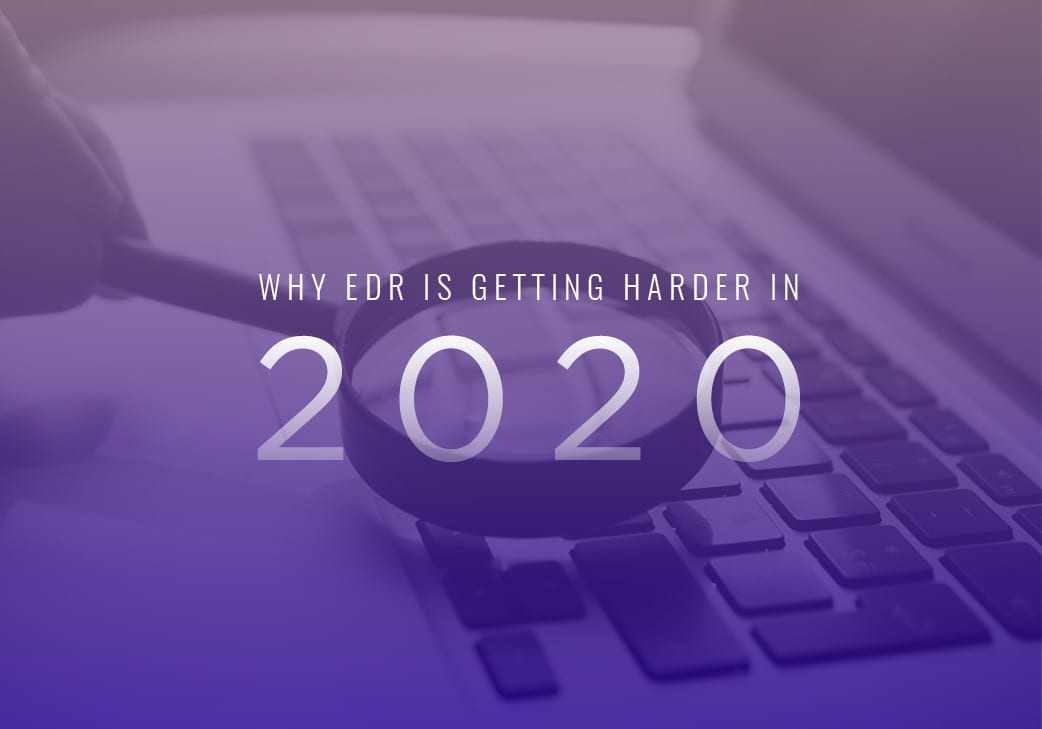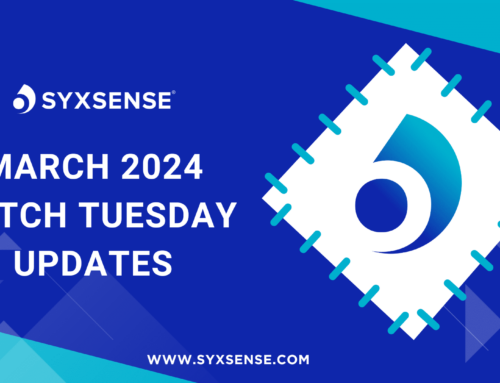
Why Endpoint Detection and Response is Getting Harder in 2020
The demand for endpoint detection and response solutions across the globe is currently quite strong, with no signs of slowdown any time soon: Recent research by London-based firm Technavio predicts that the market for this type of cybersecurity software will grow by $7.67 billion between 2020 and 2024, representing a compound annual growth rate of 10%.
Why such robust growth in this space? The answer is both simple and unfortunately discomforting. It’s becoming more difficult for businesses, government departments and other organizations to feel secure with the endpoint protections they have in place.
No wonder, given that the severity (and sheer number) of cyberthreats out there is constantly growing. Today, we’ll take a look at what challenges organizations aiming to bolster the effectiveness of their information security may face — and how they might be able to overcome such hurdles.
More Devices = More Potential Weaknesses
Analysis from the researchers at Gartner projected in August 2019 that there would be 5.8 billion open endpoints to the internet of things around the world by the end of the following year: a 21% uptick from 2019’s number.
There’s no denying the utility and communicability that the IoT fosters for so many, but while marveling at those positive attributes you must also note the risks it poses. As the number of endpoints increases across your network — both inside and outside of the IoT realm — so do the potential points of weakness.
In fact, Infosecurity magazine reported in October 2019 that there had been more than 100 million attacks on IoT-connected devices in the first half of that year. Applications run on such devices can be particularly vulnerable.
According to TechRadar, facing up to the security threat represented by IoT device proliferation requires use of an endpoint security solution that can offer comprehensive visibility of all internal and external vulnerabilities. This vigilance must be constant and in real time.
Mounting Danger of New and Established Cyberthreats
IoT-focused cyberattacks, while relatively new in the cyberthreat landscape, have already done plenty of damage, with Wired citing the Mirai and Reaper botnet attacks of 2016 and 2017, respectively, as major examples of such malicious campaigns. The latter of those infected more than 1 million networks. The new versions of the threats coming through IoT endpoints will have the ability to be even more devastating, manifesting as complex dedicated denial of service attacks.
Other attack styles that are even more well-established, like phishing, are becoming even more dangerous in similar ways, according to Security Boulevard. Malicious actors have diversified and variegated the former’s capabilities so that these social engineering scams are no longer confined to emails that are relatively easy to detect: They can be deployed via text messages and even phone calls. AI plays a significant role here, as hackers are using it to mimic an organization’s in-house jargon and speech and thus make phishing expeditions harder to discover.
Last but not least, ransomware looks to pose a more grave threat than ever before. The extortionists using this malware saw plenty of success in 2019, attacking local governments all over the U.S., including Atlanta, Baltimore and New Orleans.
In one particularly brazen, widespread attack, hackers simultaneously hit the municipal networks of 22 Texas cities and towns, disabling countless web-based civic services and operations.
Although not all of those attacks netted hackers the ransom sums they demanded, the disturbing effectiveness of such efforts has likely emboldened cyber attackers, so bigger and more devastating ransomware campaigns are surely on the horizon for 2020. The same is almost certainly true for IoT-based and social engineering attacks. Only the strongest, most versatile threat detection and solutions will be capable of meeting major cyberthreats head-on, be they new attack types or updated versions of old standbys.
The Need for Quicker Responses to Threats
Opinions vary on how long it takes cyber attackers to breach a target that they’ve picked to bear the brunt of their hacks. Some say it falls between 15 and 10 hours, while others consider it more a matter of minutes, according to TechTarget. Either way, that’s an effectively minuscule time frame.
In an interview with Dark Reading, Dan Basile, executive director of security operations at Texas A&M University, noted that it while it’s ideal to find cyberthreats before they can do any harm — like removing a tumor before cancer metastasizes uncontrollably — this perfect-world plan of action isn’t always possible. Therefore the focus switches to quickly directing infosec defenses at a detected threat before permanent damage occurs. EDR needs to be a part of a quick-response strategy, along with application firewalls, network traffic analysis and other systems.
EDR Can’t Do It Alone
That last sentence in the section above represents another key point: EDR is (and will continue to be) more difficult if you expect it to carry the weight of all infosec responsibilities on its own. It must be deployed in concert with firewalls, encryption, multi-factor authentication, threat hunting and other tools. The support of an organizational culture aware of and focused on the gravity of contemporary cybersecurity threats is also essential.
Choosing Syxsense as your EDR solution gives businesses a considerable head start on their journey to crafting a reliably secure environment for your digital assets. Coupled with our comprehensive managed IT and patch management services, Syxsense can provide your organization the peace of mind it deserves. Contact us today to learn more or sign up for a free trial.
Experience the Power of Syxsense
Syxsense has created innovative and intuitive technology that sees and knows everything. Manage and secure your environment with a simple and powerful solution.







